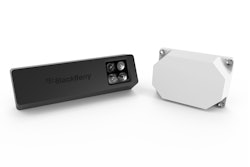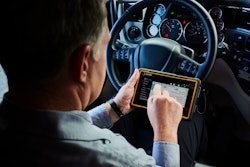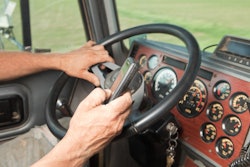Prior to 2007 when iPhone hit the market, if users wanted a better phone experience, they had to throw their phone out and go buy an entirely new one. Now, with iPhone and Android, users can simply update their software and keep their device.
That’s what telematics Platform Science is doing for the trucking industry with its Virtual Vehicle platform, and Navistar, owner of one of the top truck brands in the U.S., is hitching its wagon to the company to bring that experience to its International trucks.
Navistar is integrating Platform Science’s Virtual Vehicle, the first open OEM platform that enables fleets to access telematics, software solutions, real-time vehicle data and third-party applications directly from their vehicles. The collaboration provides International Truck customers with access to a customizable platform that delivers an unlimited canvas to fleets, allowing them to use, manage and deploy digital applications.
Darrin Demchuk, vice president of solutions at Platform Science, said Navistar already has hardware in its vehicles, and Platform Science is adapting its platform to that hardware.
“All these (trucking) companies are staring down a barrel of multi-million-dollar decisions to rip out a bunch of stuff to get what they want,” Demchuk told CCJ at the annual TCA Truckload convention in Las Vegas last week. “Hopefully it’s the last time they have to rip out hardware to get the software they want. Just get their box and pick out the solutions they need.”
Navistar will begin deploying the Virtual Vehicle platform in 2023.
Platform Science, in collaboration with Daimler Trucks North America, developed the Virtual Vehicle platform to enable enterprise fleets, telematics service providers, third-party developers and partners to access real-time data directly from connected vehicles with built-in telematics hardware installed on the production line.
The goal is to help fleets save time, money and effort by eliminating the need for aftermarket installations.
“The Virtual Vehicle platform brings a wide range of integrated Android fleet apps to customers, giving fleets choice and providing them with total flexibility to select the software solutions they need without the burden and expense of adding new hardware to access new apps,” Jake Fields, co-founder and CTO of Platform Science, said in a news release.
The Virtual Vehicle platform improves productivity with factory-installed telematics hardware, allowing fleets to maximize uptime by avoiding installation delays and costs for complementary hardware. It also allows fleets to create a software experience catered to individual business needs through a growing pipeline of developer-created innovations. It improves accessibility by leveraging edge, cloud and in-dash data to optimize networks, keeping data available 24/7/365, even when fleets are offline. And it’s cost effective with usage-based billing.
Demchuk said there has been a history in the trucking industry of telematics companies partnering with OEMs at a solution level, embedding their specific telematics solution into the vehicle, but that is only useful to fleets that are customers of that specific company.
“Our approach is a little different where we’re embedding an actual platform into their vehicle, which can host and support any solution provider offerings.
“What we’re trying to do is make a common software platform available on all vehicles so application developers don’t have to worry about the hardware and how to get data off the truck; they can just use the development platform to access that data outright, so we’re basically separating hardware and software so innovators can focus on the software side and ourselves, who partner with folks like Navistar, can focus on the infrastructure to power it,” Demchuk said. “Our goal is to standardize the infrastructure needed to build great telematics products. Our goal is to support and enable that as best as possible so fleets end up with the broadest options and choices available to them, and they don’t have to rip a bunch of hardware out to make those choices.”
Sean Slyman, director of Connected Services at Navistar, said this partnership is about the “power of choice.”
Navistar has had a telematics device standard on its Class 8 trucks since 2019 and recently announced plans to put them standard on every commercial vehicle, classes six through eight.
“We, as an OEM, probably have the largest partner ecosystem, and we do that through what we call an open framework that allows people to integrate with our vehicles and vice versa,” Slyman said. “What’s different with Platform Science is they’re going to be the first partner that puts their intelligence on our device, so that becomes important.”
He said imbedding Platform Science’s Virtual Vehicle changes the way fleets receive data.
Currently, he said, telematics devices send most data to the cloud, which causes delays in returns on calculations. With Virtual Vehicle imbedded directly on the telematics device, he said data is calculated in real time, providing instant feedback for drivers, helping to improve safety and cost efficiency.
“Some of these trucks today, they’ll have a telematics device, they’ll have cameras, they’ll have multiple things with sim cards that are phoning information, and for every one of those black boxes you put on a vehicle after the vehicle is sold, it’s an additional fee you have to pay – an additional phone bill. There are some vehicles that have three to five different things that are phoning information,” Slyman said. “Data that’s coming off the vehicle then isn’t consistent always; it’s not as clean. So what we’re doing is trying to pull all of that together and say, ‘We’ll get you the data you need off the vehicle, and we’ll send it out to our partners.’ It makes it cleaner so the customer doesn’t have to buy all of these various things.”
By integrating all of this data into one platform that is directly installed in the truck at assembly, he said it offers the same technology to smaller fleets that only mega fleets have been able to afford in the past.
Slyman said it also addresses safety with driver training and coaching, and Demchuk said it can also help with the driver shortage.
“There are some folks – after looking at the data – who argue that there’s a driver shortage; it’s just that there are more inefficiencies to clean up,” Demchuk said. “If we, through sensors, apps and technology, can make it so these fleets can operate their networks more comprehensively and efficiently, we might be able to fix the driver shortage without adding any new drivers to the equation at all.”













